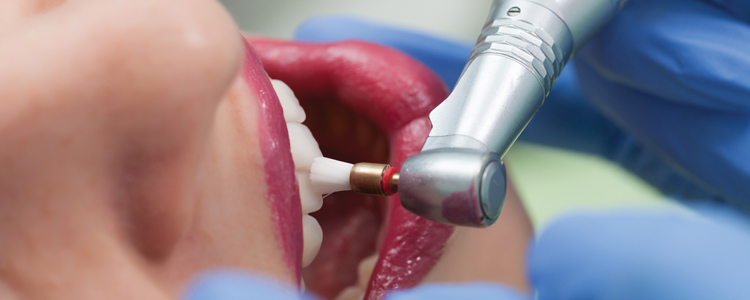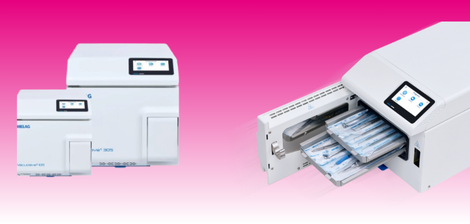Dr Tameeza Tejani - Specialist in Fixed and removable Prosthodontics
Dr Farzeela Merali-Rupani - Head of Clinical
There is an increased awareness of the pitfalls of preparing teeth for restorations as well as the advantages of adhesive dentistry as an alternative option, especially amongst the health conscious, and increasingly knowledgeable patients. Composite veneers appear to be becoming a popular treatment option for these patients and have shown good survival rates (87 per cent over three years) in a recent randomised control trial (Gresnigt et al., 2012). Despite this, most dentists would agree that porcelain veneers tend to be more natural looking than composite, due to the translucency and polished surfaces produced by the dental laboratories.
However, modern advances in composite technology have aimed to overcome this issue and common perception. Composite technology has advanced from macro-filled to micro-filled and from hybrids to micro-hybrids, and eventually to nano-filled composites. Nanotechnology has led to composite restorations with better optical and mechanical properties, reduced surface abrasion, higher polish and longer surface durability (Khalaj et al., 2018).
With so many different composites on the market, it is difficult to answer the commonly asked question – which composite system results in the best aesthetics? The answer to this question will vary greatly depending on who you ask. However, what most clinicians will agree on is that in order to achieve aesthetic success, a material must reflect and refract light in a similar way to natural tooth structure. In order to blend the restoration with the tooth surface, the optical properties of the composite restoration should closely match that of the surrounding tooth/teeth. Therefore, in choosing a composite, a clinician should consider the surface characteristics of that material, including gloss, colour stability and surface roughness.
Surface roughness and gloss are dependent on both material choice and the polishing procedure used. A recent lab-based study (Lopes et al., 2018), compared surface roughness and gloss of two nanocomposites with different polishing protocols. They found that multi-step protocols (including combining medium grain and fine grain polishing discs, resin finishing cups and applying certain polishing compounds with a soft-bristle brush) created a lower surface roughness and higher gloss than the use of a finishing diamond bur alone.
Furthermore, a lower surface roughness was found when using a nanoparticulate resin over a nanohybrid presumably as the resin is made up of agglomerates of particles of zirconia-silica (nanoclusters) and particulate inorganic filler. Therefore, by removing the surface material, it causes smaller irregularities and therefore a lower surface roughness. As well as influencing aesthetics, it is well known that surface roughness affects the amount of plaque accumulation on composite surfaces (Bollen et al., 1997). Research shows that a surface roughness threshold of less than 0.20µm is necessary to prevent bacterial adhesion and plaque accumulation (Jefferies, 2007) which can ultimately lead to secondary caries and failures of restorations (Aykent et al., 2010). Rough composite restorations are also more prone to discolouring and may be unacceptable to patients whose tongues can detect a surface roughness greater than 0.50µm (Reis et al., 2003; Jones et al., 2004).
Dental Directory has enlisted the help of UK qualified and now Dubai based Prosthodontic Specialist, Dr Tameeza Tejani and our Head of Clinical, Dr Farzeela Merali-Rupani who is a General Dental Practitioner, to share their expert opinion and personal clinical tips on how to finish (reduce excess material, create morphology and function) and polish (reduce surface roughness and the scratches created by finishing) anterior composite restorations to achieve aesthetically desirable results.
We’d like to give special thanks to Dr Tameeza Tejani for her contributions. You can follow @dr_tameeza on Instagram for further tips and advice.
References
Aytac F., Sirin Karaarslan E., Agaccioglu M., Tastan E., Buldur M., Kuyucu E. Effects of novel finishing and polishing systems on surface roughness and morphology of nanocomposites. J. Esthet. Restor. Dent. 2016;28:247–261. [PubMed]
Antonson S.A., Yazici A.R., Kilinc E., Antonson D.E., Hardigan P.C. Comparison of different finishing/polishing systems on surface roughness and gloss of resin composites. J. Dent. 2011;39:9–17.
Alothman Y, Bamasoud MS. The Success of Dental Veneers According To Preparation Design and Material Type. Open Access Maced J Med Sci. 2018;6(12):2402-2408. Published 2018 Dec 14. doi:10.3889/oamjms.2018.353
Gresnigt MM, Kalk W, Özcan M. Randomized controlled split-mouth clinical trial of direct laminate veneers with two micro-hybrid resin composites. Journal of dentistry. 2012;40(9):766–775.https://doi.org/10.1016/j.jdent.2012.05.010 PMid:22664565. [PubMed]
Lopes IAD, Monteiro PJVC, Mendes JJB, Gonçalves JMR, Caldeira FJF. The effect of different finishing and polishing techniques on surface roughness and gloss of two nanocomposites. Saudi Dent J. 2018;30(3):197-207.
Khalaj K, Tayefi-Nasrabadi M, Soudi A. The evaluation of surface sealants’ effect on the surface roughness of Nano-hybrid composite after polishing with One-Step system (in-vitro). J Clin Exp Dent. 2018;10(7):e635-e641. Published 2018 Jul 1. doi:10.4317/jced.54858
Manauta J, Salat A. Layers, An atlas of composite resin stratification. Chapter 10 Surface and polishing Quintessence Books, 2012
Türkün. New trends in Polishing Direct Resin Composites. Practical procedures & aesthetic dentistry. 2004; 16 (6)
D Kritzinger, pD Brandt, Fa De Wet. (2017) The effect of different polishing systems on the surface roughness of a nanocomposite and a microhybrid composite. saDJ July 2017, Vol 72 no 6 p249 - p257
Bollen CM, Lambrechts P, Quirynen M. (1997) Comparison of surface roughness of oral hard materials to the threshold surface roughness for bacterial plaque retention: a review of the literature. Dent Mater. 1997;13(4):258-69.
Jefferies SR. (2007) Abrasive finishing and polishing in restorative dentistry: a state-of-the-art review. Dent Clin North Am. 2007;51(2):379-97.
Aykent F, Yondem I, Ozyesil AG, Gunal AS, Avunduk MC, Ozkan S. (2010) Effect of different finishing techniques for restorative materials on surface roughness and bacterial adhesion. J Prosthet Dent. 2010;103(4):221-7.
Reis AF, Giannini M, Lovadino JR, et al. (2003) Effects of various finishing systems on the surface roughness and staining susceptibility of packable composite resins. Dent Mater. 2003;19(1):12-8.
Jones C, Billington R, Pearson G. (2004) The in vivo perception of roughness of restorations. Br Dent J. 2004;196(1):42-5.



